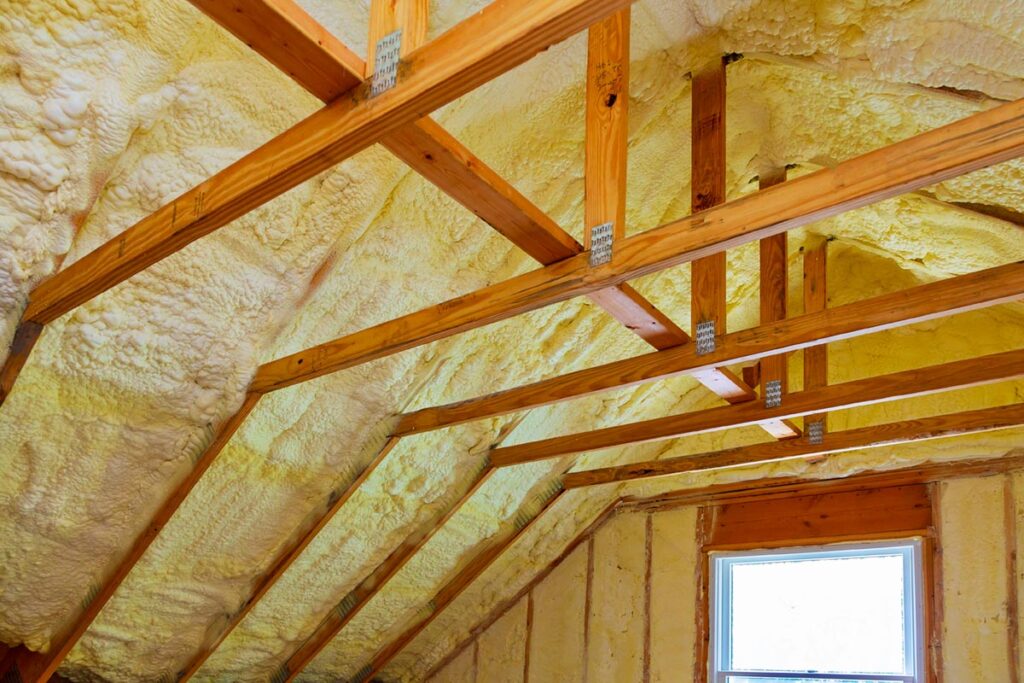There are a few main problems with foam loft insulation:
Expense
Spray foam insulation can be more expensive than other types of insulation, such as fibreglass or cellulose.
The material is lightweight and easy to install, and it can be a more efficient way to keep a home warm and reduce energy bills.
The cost of foam insulation can vary depending on the insulation type and the project size, but it is generally more affordable than other insulation materials.
Additionally, because the insulation is lightweight and easy to install, the installation process can be completed quickly, which can help to reduce labour costs.
Overall, foam insulation can be a cost-effective solution for insulating a home.
Health and Safety Concerns
Spray foam insulation releases volatile organic compounds (VOCs) into the air during installation, harming the installer and building occupants.
The material can contain harmful chemicals that irritate the skin, and dust particles can be released into the air during installation.
It is important to wear protective clothing and safety equipment while handling the material.
Additionally, the insulation should be installed away from sources of heat or flame and in dry areas, away from water sources.
It is important to follow all safety guidelines and regulations when handling and installing foam insulation to ensure that it does not pose a health or safety risk.
Difficulty of Installation
Professional contractors typically apply spray foam insulation, and the installation process can be messy and time-consuming.
Additionally, if not applied correctly, foam loft insulation may not provide an adequate seal, resulting in drafts and heat loss.
Potential for Fire
Foam insulation can be a significant fire hazard if not installed correctly. The material is highly flammable and can ignite if exposed to a flame or heat source.
It is important to keep foam loft insulation away from sources of heat or flame, such as light fixtures, space heaters, or stoves.
It is also important to keep combustible materials from the insulation, such as paper, cardboard, or fabric. Additionally, the insulation should be properly ventilated to ensure that any fumes or smoke are directed safely away from the building.
It is important to follow all safety and installation guidelines when installing foam insulation to ensure that it does not pose a fire hazard.
The difficulty of removal
Removing foam insulation can be a difficult and time-consuming process. The material is lightweight and can be challenging to remove in large pieces.
It is important to wear protective clothing and safety equipment while removing foam insulation to protect against skin irritation and inhalation of dust particles.
Additionally, the insulation should be carefully removed from any electrical wiring or pipes in the area.
After the insulation is removed, it must be disposed of properly, and any debris should be cleaned up thoroughly.
Removing foam insulation can be difficult, and it is important to take the necessary safety precautions.
Impact on Ventilation
If the foam is not applied correctly, it can block vents and other necessary openings for proper attic ventilation.
This can lead to moisture problems and mould growth, which can cause it to break down and lose its insulating capabilities.
Loft insulation should be installed in dry areas, away from water sources.
Final Thoughts
It is essential to consider these potential issues when deciding whether or not to use foam loft insulation and hiring a professional with experience and knowledge in applying this type of insulation is critical.
Further Reading
Spray foam insulation explained – Which
Find out about the different types of spray foam, if spray foam insulation is right for your home and how much spray foam insulation costs.
Spray Foam Insulation Guide – Homebuilding and Renovating
In the right setting, and installed by the right professional, spray foam insulation can be a good choice.
See more about spray foam on Skill Builder





